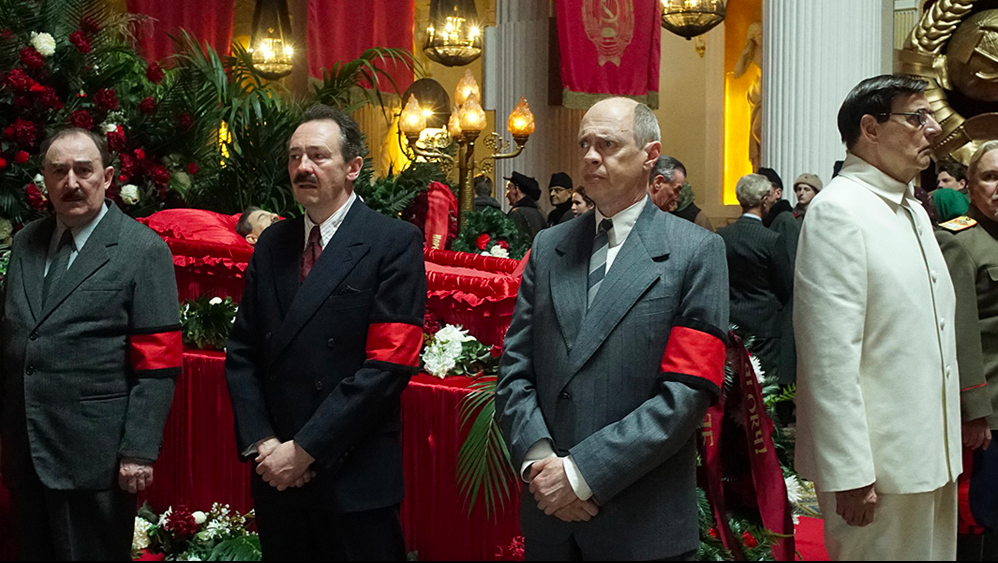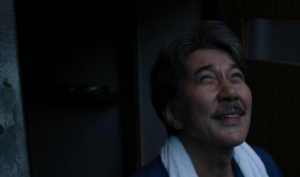Armando Iannucci is no stranger to biting political satire. The two works he’s best known for, BBC’s “The Thick of It” and HBO’s “Veep,” both possess a take-no-prisoners approach to mocking the petty machinations and manipulations of the British and American political systems. With his most recent work, “The Death of Stalin,” based off a graphic novel by Fabien Nury, Iannucci turns his sights towards a period of political chaos in Russian history. March of 1953 saw the death of Joseph Stalin and the turmoil that followed as the rest of the Soviet government tried to formulate a plan of succession. Iannucci treats an undoubtedly sensitive topic with his trademark wit and irreverence, and also avoids attempting to proselytize about the current political moment. While the film never hits the heights of, say, the dark satire of Kubrick’s Dr. Strangelove or the iconography of Chaplin’s The Great Dictator, it works on its own terms as a searing and darkly funny take on one of the most despicable figures of the 20th century.
When dealing with a figure responsible for as much suffering as Stalin, one would expect Iannucci to play it safe in how depicts the dictator. As the title of the film would indicate, Stalin isn’t a prominent member of the cast, but his figure looms large over the proceedings. Indeed, Iannucci is not interested in deconstructing Stalin in a similar vein to Charlie Chaplin’s timeless takedown of Hitler in “The Great Dictator.” His Stalin feels right at home with the rest of the characters. It’s the world around Stalin that creates the humor and absurdity.
The opening sequence shows a disorganized and overwhelmed Radio Moscow producer restaging an entire orchestral performance to record it for Stalin. The bit plays out twice: first with the real performance, then with a second performance that involves bringing in homeless people from the street to fill out the audience (half of whom had left) and waking up a conductor to direct the orchestra. In an interview with the Voice, Iannucci said that he had to whittle the truth down to make it more believable. The charade actually played out three times: “Death of Stalin” left out one attempt where the producer located a composer who was too drunk to conduct the orchestra. Including this may have felt too unrealistic, but many of the other moments of absurdity in the film really did happen. Gags like the committee’s confusion over whether or not to call a doctor after finding Stalin lying unconscious in his own filth feel exactly like a joke out of a comedy like “Veep,” and yet they represent an actual series of events.
Working in comedy would typically give a comedian reign to take creative liberties with factual events. But Iannucci said that he told his cast to play the film as seriously as possible. “Don’t play it for the laughs, don’t perform it for the laughs,” he said. “Perform it for real.” Then, the laughter would come from the absurdity of the situation. And it’s this absurdity that creates the film’s central conceit: the idea that totalitarianism can be inherently funny. This is undoubtedly a fine line to walk. Too little mockery, and the film has no teeth; too much, and he risks trivializing a form of government responsible for millions upon millions of deaths. In the end, Iannucci strikes the delicate balance brilliantly. The film never feels as if it’s trying too hard to provoke laughter, nor does it feel blatantly disrespectful. Instead, Iannucci relies on his all-star cast.
“I knew it was a huge ensemble piece,” Iannucci said. He started with the casting of Lavrentiy Beria (Simon Russell Beale), the figure around whom the tangled nature of the story revolves. Beria is the linchpin of the film: he’s not a name as well-known as Krushchev or as memorable as Molotov, but the real thrust of the film comes from political squabbling culminating in a kangaroo court that condemns Beria to death. Beale’s performance is subtly panicked, and yet controlled as he tries to maintain order among chaos. “Beria tries to keep everything contained and clipped,” Iannucci said.
Once the death of the titular character has occurred, the film transitions into a war of deceit and manipulation between Beria and his foil, Nikita Kruschev (Steve Buscemi). Buscemi is perfectly cast as Kruschev. His moments of genuine anger come through in comedic frustrations, which are perfectly in tone with the ethos of the film. A particular highlight is when he discovers he’s been put in charge of Stalin’s funeral. The awkward, absurdist humor is classic Iannucci, and Buscemi relishes the situation. “You think, who’s the perfect opposite for Beria? And I thought of Steve [Buscemi] because Steve can do the kook and the comic,” Iannucci explained. “He can be menacing, but also he’s loud and voluble and garrulous and funny.”
The rest of the cast find themselves caught in the middle of the scheming between these two men. George Malenkov (Jeffrey Tambor) is the puppet who oscillates between being a patsy of Beria and trying to assert his authority. Tambor channels his best George Sr. as the consistently flustered Malenkov, and his straight-man performance helps keep the events grounded. Michael Palin, Jason Isaacs, and Rupert Friend are all highlights of the rest of the ensemble, each of whom feels like a cog in the machine. And former Bond girl Olga Kurylenko accompanies Andrea Riseborough in providing some much needed femininity that prevents the predominantly-male cast from overwhelming the proceedings. The comedy is also enhanced by the fact that no one in the cast attempts to do a Russian accent. Hearing cutting insults spat through thick British accents creates an odd cognitive dissonance, providing a reminder that what the audience is watching is, at its core, a creative work.
Iannucci believes in the importance of humor in understanding the absurd. “The circumstances, the facts are so mad that the only way to begin to respond is through comedy, to make sense of it,” he said. But he hesitated to encourage audiences to read into the film as a parable of contemporary politics. “I don’t like writing a comedy where I’m trying to change a person’s political point of view or get them to vote a certain way,” he said, adding that good satire leaves the interpretations and applications to the audience. The temptation to interpret “The Death of Stalin” as a picture of the current moment is there, but the film works far better depicting a time and place, rather than trying to be a transcendent work.
By the time the film reaches its conclusion, the tangled storyline results in an execution that isn’t clear about whether it’s supposed to be darkly funny or just dark. On one hand, the comedy is still there, but seeing a human being executed after a farce of a trial might be too dark to be funny. Perhaps this is the most noteworthy thing about “The Death of Stalin.” It’s a funny film about a darkly absurd subject matter. And while it may not be regarded as a timeless masterpiece, it still works on its own terms as a snapshot of a moment in history that saw the far-reaching impacts of the deaths of one of history’s most deplorable figures.





